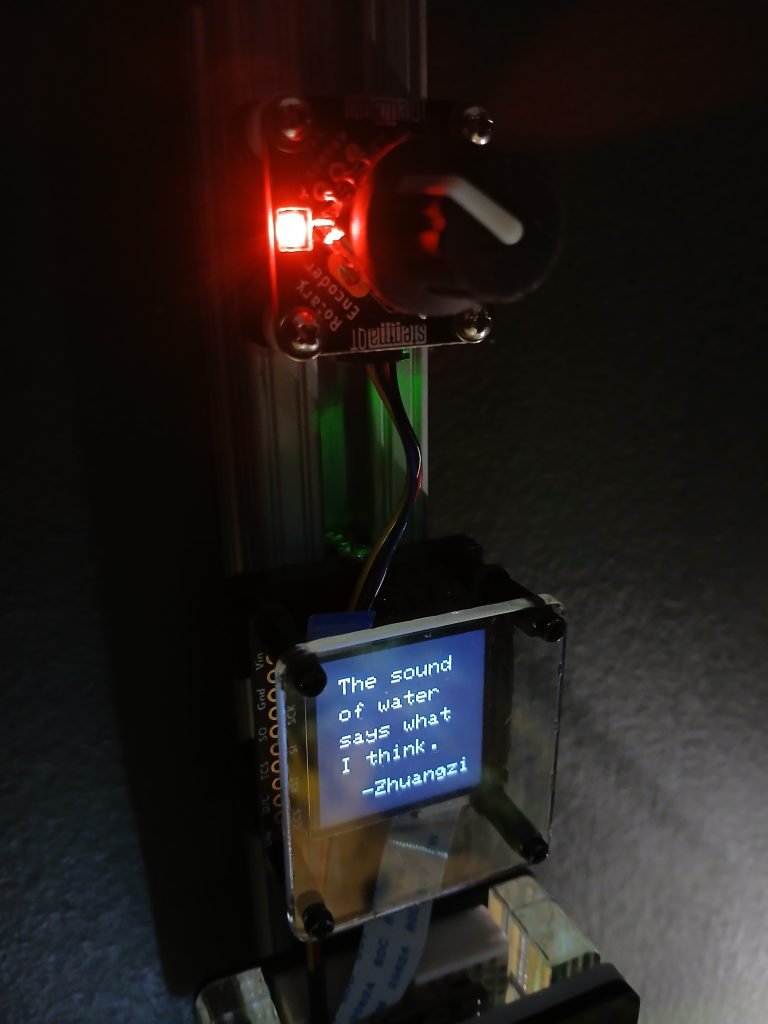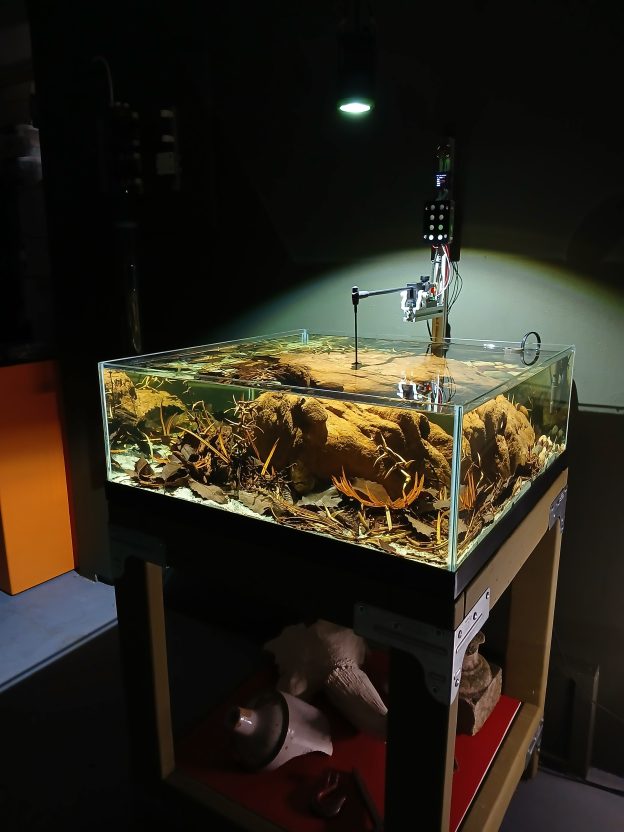Aquascaping is the art of creating naturalistic, visually-pleasing underwater scenes in aquaria. Bn aquarium enclosure can be set up for strictly utilitarian ends, such as fish breeding, but an aquascape seeks to achieve visual harmony between the aquarium fish and/or or other livestock, live plants, sediment substrates, stones and sunken log, root or branch features. Many hands and minds have worked to create miniature worlds inside of aquariums with seemingly boundless forms of expression, but the late Japanese photographer, explorer and craftsman Takashi Amano should be credited for establishing the theory and methods of contemporary aquascaping. While drawing on refined Japanese horticultural traditions such as karesansui, bonsai and tsubo-niwa, Amano synthesized the Nature Aquarium concept with integration of plant care, fish selection and visual design questions to build captivating aquascapes as recreations of aquatic environments in Nature. He also applied modern design aesthetic to build aquarium tanks and other hardware with clean lines and the best materials. Amano pioneered the use of pressurized carbon dioxide (CO2) to dramatically improve aquarium plant vigor and he founded Aqua Design Amano, manufacturer of premium glass aquariums, CO2 equipment, lighting, furniture and water filtration.
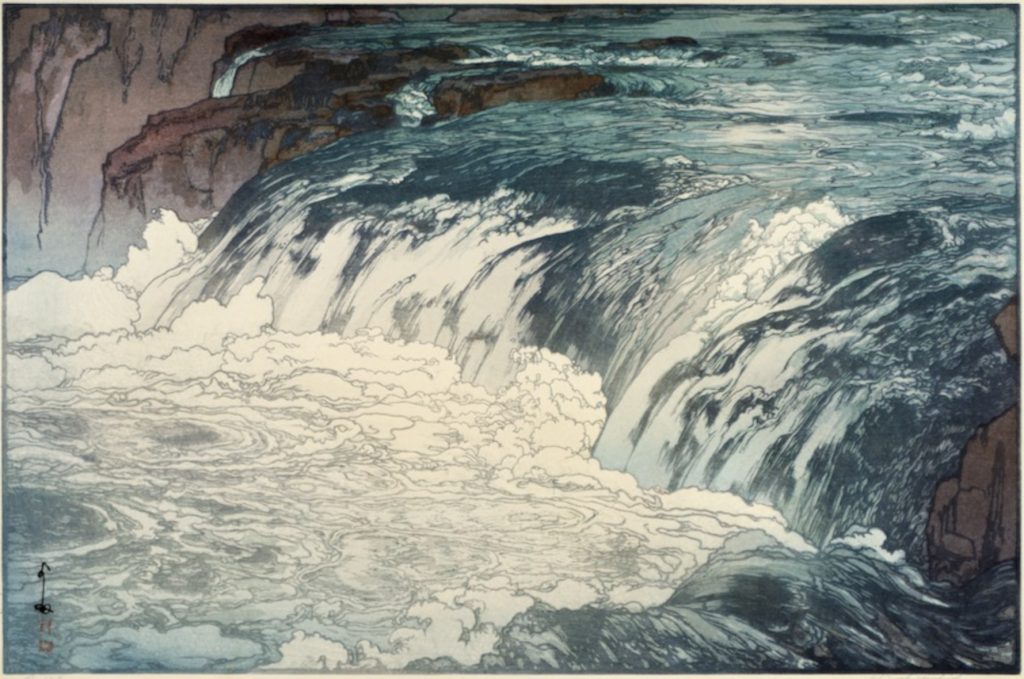
Public domain image.
Water is assumed as the primary medium for any aquascape. Skilled aquascapers take great care to maintain water clarity, chemistry and temperature within optimal parameters. However, as fundamental as it is to both wild and captive aquatic ecosystems, water is seldom treated as a subject or focus in a decorative aquascape. This aquarium project attempts to elevate the water itself as a dynamic, specific aquascape element. Combining natural biotic, and abiotic elements with electrical/electronic parts, Horses’ Teeth represents a desert pool environment and the physical forces influencing the motion of water.
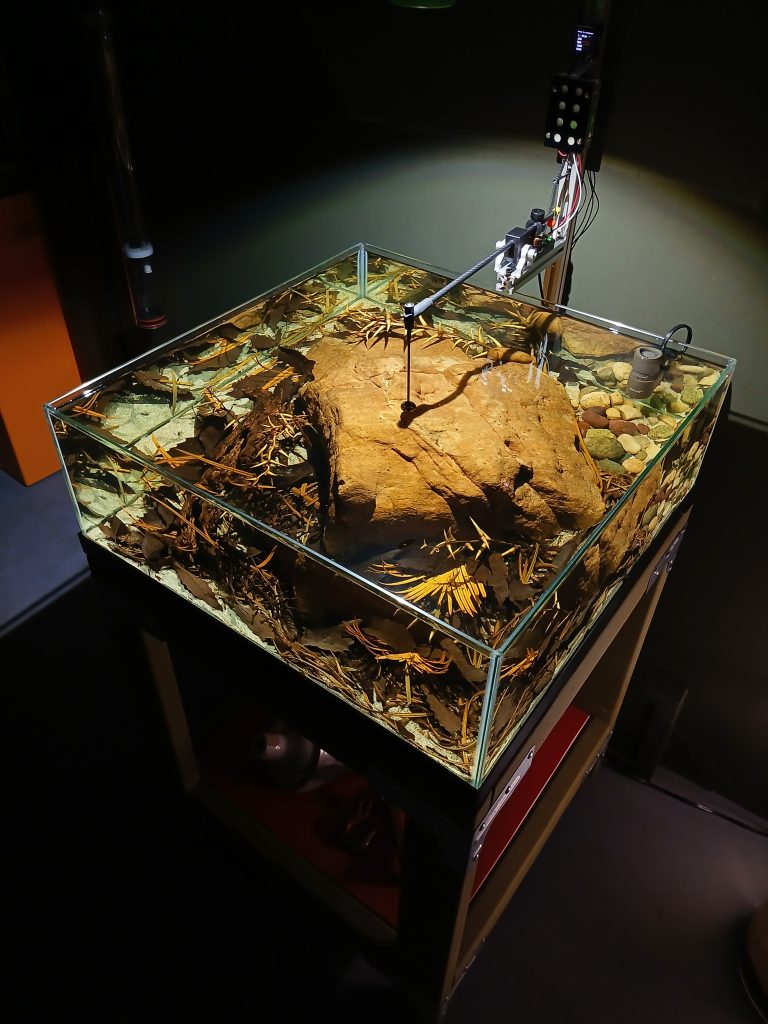
The aquarium enclosure is an approximate 75-liter (20 gallons) square (60cm X 60cm X 20cm) [24″ X 24″ X 8″]) DIY glass tank. A single large weathered sandstone slab with a fine sand substrate and botanical elements reinforce the desert environment concept. A fish species in Family Goodeidae, the Redtail Splitfin (Xenotoca eiseni) introduced in a small group is not exactly true to biotope, but looks right with the other elements. We may eventually replace these animals with a better desert fish fauna representation, such as a Cyprinodon sp. Pupfish. A pendant LED lamp (Kessil A160WE Tuna Sun) provides illumination as a bright point-source light, while a surface skimmer (OASE CrystalSkim 350) removes water surface film and provides some water circulation.
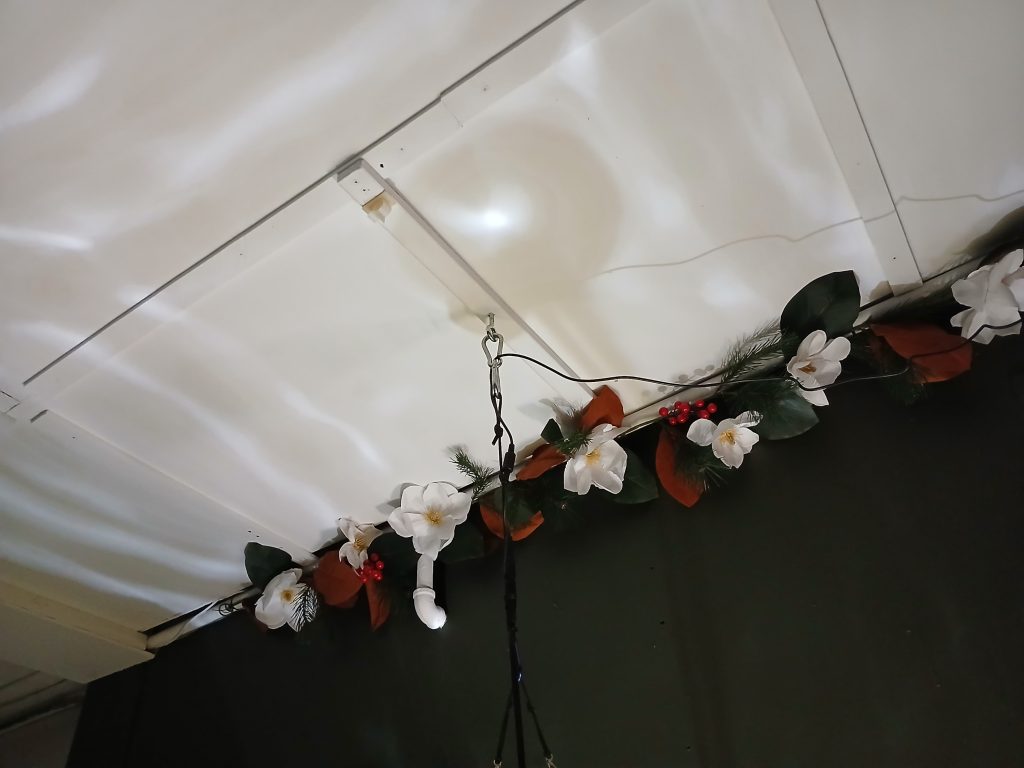
A microcontroller + electromagnet assembly generates concentric water ripples and provides a measure of interactivity via a digital menu, rotary encoder and LCD screen display. An observer can scroll through four menu options to select signal delays for a small electromagnet, which in turn actuates a horizontal dipper arm through attraction of a ferrous steel ring. Water ripples then propagate outward from a round plastic bead at the dipper arm’s terminus. Ripple tanks of the kinds used for laboratory experiments or science education may employ mechanisms like this one or other solutions.
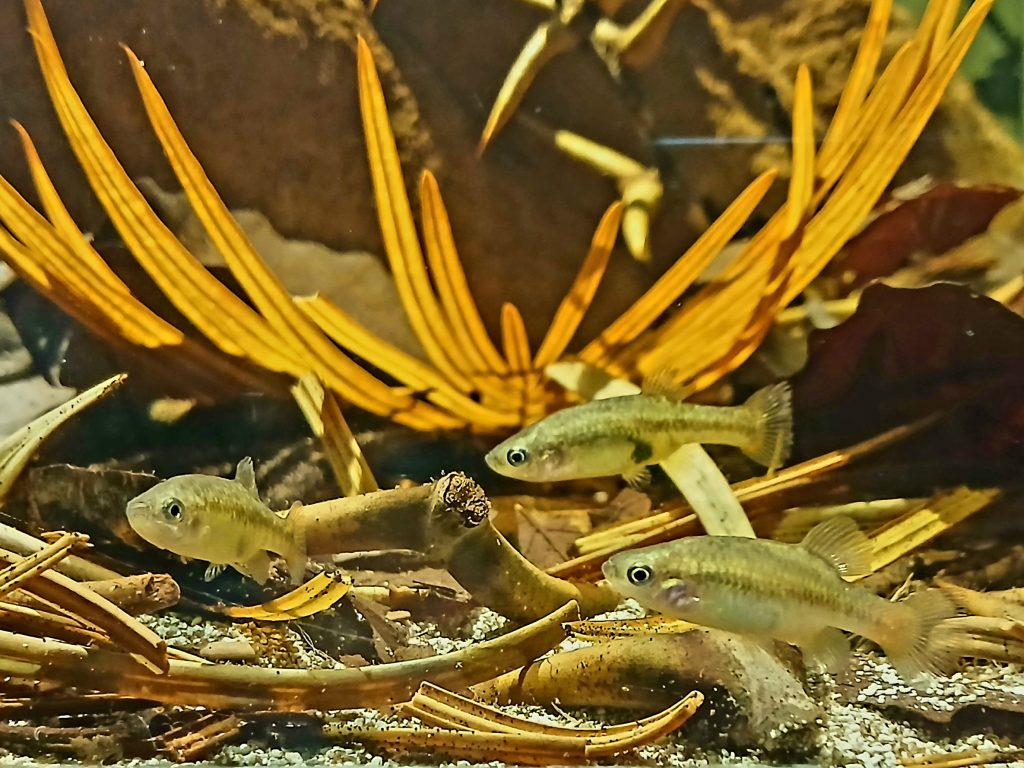
These shallow ripples are themselves barely visible as they travel across the aquarium water surface, but a lensing effect created by their interactions with light, known as water caustics, reflects distinct patterns on the wall surface and ceiling above the tank. Timing of ripple generation as modulated by the microcontroller demonstrates principles such as wavelength and frequency, while diffraction, reflection, interference and reflection emerge as additional wave properties when their energy contacts the aquarium glass. In this aquarium, fundamental physical principles thus manifest alongside ecological, biological and geological processes as a novel way to represent their myriad interactions in Nature.
